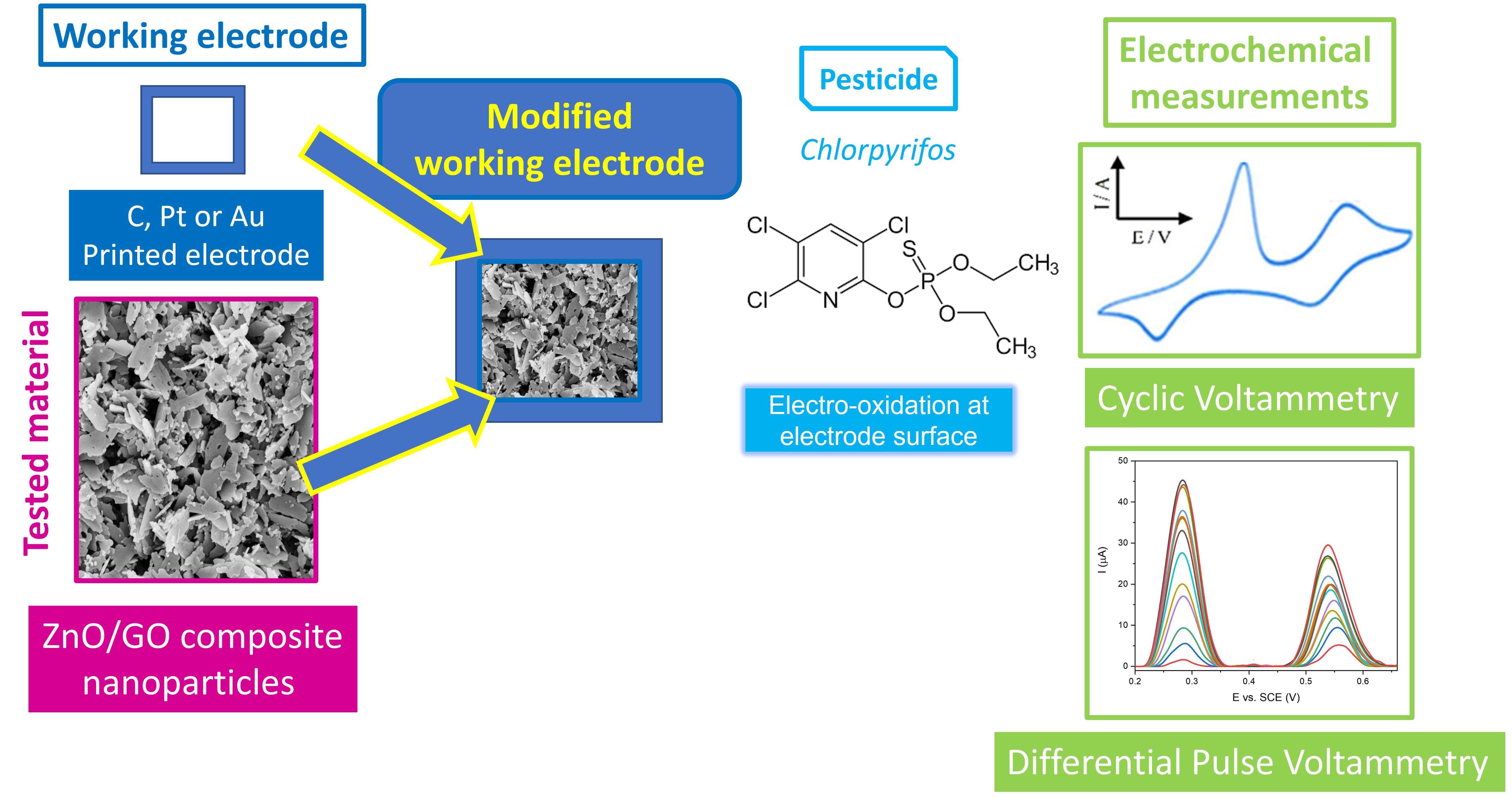Science Fund of the Republic of Serbia – Proof of Concept Project, 2024–2025
Project 14926 – ISEC – Development of ion-selective electrode for the detection of Chlorpyrifos in water
The detection and monitoring of various pollutants in water is one of the key aspects of achieving UN Sustainable Development Goal 6, to ensure water for the entire world population by 2030. Compared to traditional analytical methods, electrochemical sensors have numerous advantages, making them increasingly used for detecting and monitoring chemical pollutants in water. Important properties of electrochemical sensors, such as selectivity, sensitivity, response time, and portability, are continuously improved. To enhance the properties of electrochemical sensors, metal oxide nanoparticles, including zinc oxide (ZnO), are utilized.
The innovation brought by the ISEC project lies in combining surfactants such as CTAB and Plyronic with varying graphene oxide particle content, in situ (during crystallization), modifying the ratio of surface-to-volume crystal defects in ZnO nanoparticles. This improves the selectivity, sensitivity, and response time of electrochemical sensors for pesticide detection in water. The electrochemical sensors we are developing are tested for detecting the pesticide chlorpyrifos, which is used in agriculture in Serbia, particularly in fruit farming, to end up in waterways.
The goal of our project is to develop electrodes for detecting chlorpyrifos that are not only effective but also simple to use, ensuring their broad adoption by various stakeholders, including representatives of small and medium-sized enterprises (SMEs) involved in production processes that generate wastewater containing chlorpyrifos, and in partucular agricultural producers. Additionally, our goal is to attract laboratories testing the quality of natural water and wastewater. A special segment of the ISEC project involves communication with representatives of (agricultural) SMEs, as well as local community representatives. Along with informing them about application possibilities, we will also, with the consent of stakeholders, measure chlorpyrifos content.
The application of project results is expected to influence the encourage the local economy by promoting new technologies through communication and implementation of our electrodes. This will improve ecological awareness in society and improve the wastewater situation in Serbia, aligning with EU standards (the deadline for aligning pollutant emission values with EU threshold limits is 31 December 2025). All these efforts aim to enhance the quality of life in Serbia and the environment.

Team

Dr. Smilja Marković

Prof. Dr. Ivana Stojković Simatović

Prof. Dr. Vladimir Tomašević

Dr. Jelena Belošević Čavor

Dr. Ana Stanković

Katarina Aleksić




